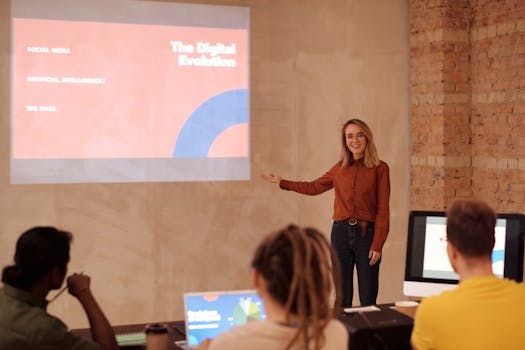How AI Checkers Distinguish Between Human and AI Content
AI checkers work by analyzing text structures and patterns. They employ advanced algorithms, including natural language processing and machine learning, to determine if content is human-written or generated by AI. These tools tokenize text, creating manageable segments for analysis.
One significant technique is perplexity. A lower perplexity score often suggests AI authorship, while human writing tends to be more unpredictable. This means AI-generated content can appear formulaic, lacking the unique flair we humans bring.
Another concept is burstiness, referring to the variation in sentence structure and length. Human writing is typically diverse, while AI tends to follow more monotonous patterns. This difference is crucial for detection.
Many believe AI checkers are foolproof. But I argue they aren’t. They can misclassify text, leading to false positives or negatives. Language is nuanced, and current models struggle to grasp its complexities.
Ethical concerns arise too. As noted by Diana Chen from the FTC Blog, reliance on these tools can lead to biased outcomes. We must tread carefully.
To improve detection, I suggest a hybrid approach. Most experts think AI checkers alone suffice, but combining them with human judgment could yield better results. This method allows for context and understanding that AI simply lacks.
In the realm of education, the debate continues. Critics argue that over-reliance on AI checkers promotes compliance over authentic learning. I believe we should see AI as a partner in education. By using it as a learning assistant, we can teach students about originality and critical thinking.
As technology evolves, so must our strategies. AI detection tools are not static; they need constant updates to keep pace with advancements in AI generation. The future is bright, but we must adapt.
Understanding the Challenges of AI Detection Tools
Many people think AI checkers are foolproof. But I believe they have significant flaws. For instance, false positives and negatives are rampant. They often misclassify human text as AI-generated or the other way around. This inconsistency is frustrating!
Language is complex and nuanced. AI models struggle to grasp subtle context. As Carrie Gardner et al. from Carnegie Mellon University noted, “Building trustworthy AI systems will increase the impact of these systems to augment work and support missions.” This highlights the need for better detection methods.
As AI text generators improve, they mimic human writing styles more convincingly. It’s a constant cat-and-mouse game. AI checkers must evolve to keep up. But many still lag behind, which is alarming.
Ethical considerations are another layer of complexity. Using AI detectors in schools raises privacy issues. Diana Chen from the FTC Blog stated, “Marketers should avoid using automated tools that have biased or discriminatory impacts.” This concern extends to educational settings as well.
Instead of solely relying on AI tools, a multi-tiered approach is needed. Preliminary detection can be done by AI, but trained professionals should review the results. This way, we can ensure a balance between efficiency and accuracy.
Incorporating human judgment alongside AI technology could revolutionize the field. We need to move beyond simplistic solutions. The future of AI detection should embrace collaboration, not just automation.
The Future of AI Detection in Digital Content Creation
AI detection tools are evolving fast. Most people think they just analyze text for patterns. I believe they will soon integrate more advanced features, like context understanding and emotional tone detection.
Current AI checkers often flag repetitive phrases. But what if they could assess creativity and depth? Imagine a tool that not only checks for AI generation but also evaluates the richness of human expression.
Many experts suggest that combining AI with human judgment is the way forward. I completely agree. Human evaluators bring in nuances that algorithms often miss, providing a fuller picture of content authenticity.
According to SurferSEO, AI detection tools need to adapt to the evolving landscape of AI-generated content. The tools should continuously learn from new writing styles and trends to stay relevant.
Another point of contention is the ethical implications of AI checkers in education. Critics argue they can promote a culture of surveillance. I think we should use these tools as educational aids instead, fostering originality and critical thinking.
As noted by Erin Servais from The Blue Garret, collaboration between AI systems and human reviewers can enhance the effectiveness of content evaluation. This hybrid approach could redefine how we assess originality in digital content.
AI detection tools will shape the future of content creation. They can either be gatekeepers or collaborators. It’s up to us to decide how we harness their potential.
Best Practices for Integrating AI Checkers in Your Workflow
Here are some practical tips for effectively using AI checkers in your content creation process.
- . Start with AI checkers early in your content creation. They can help identify AI-generated segments before final edits.
- . Don’t rely solely on AI checkers. Most experts think they’re foolproof, but I think human review is essential for context.
- . Use multiple AI detection tools. Different tools have unique strengths, so diversifying can yield better results.
- . Regularly update your AI detection tools. As AI evolves, so should your detection methods to keep pace with new writing styles.
- . Train your team on AI detection. Understanding how these tools work can lead to more effective integration into your workflow.
- . Incorporate feedback loops. Share insights from AI checks with your team to improve future content quality.
- . Monitor for false positives. AI checkers can mislabel human-written content; review flagged text carefully.
- . Stay informed about AI writing trends. Knowing what AI can produce helps you better understand what to look for.
- . Engage in discussions about AI ethics. Many think AI checkers are just tools, but I believe ethical implications are vital.
- . Experiment with hybrid models. Some experts suggest combining AI checks with human oversight for more nuanced evaluations.
Alternative Approaches to Using AI Checkers Effectively
Most people think that relying solely on AI checkers is the way to go. I believe that’s a mistake because these tools can miss the nuances of human writing. They often flag creative expressions as AI-generated, leading to unnecessary confusion.
Instead of just using AI checkers, consider integrating them with human insight. This combination allows for a more nuanced understanding of the content. As María Ramos from SurferSEO puts it, “AI detection tools are crucial for uncovering low-quality content that shouldn’t be published without editing and fact-checking.”
Many assume that AI checkers can independently handle all detection tasks. I think that’s naive because these tools can generate false positives. They might label a perfectly human-written piece as AI-generated just because of style or complexity.
What if we employed a hybrid model? This approach merges traditional AI detection methods with human judgment. It’s like having a safety net—AI flags the potential issues, and humans provide context and understanding.
Moreover, the ethical implications of using AI checkers in education should not be ignored. Critics argue that these tools can undermine genuine learning. Instead, we can use AI as a learning assistant, helping students grasp the importance of originality.
Incorporating AI checkers wisely can boost content quality. The key is to not let them dictate the narrative. A balanced approach can lead to richer, more authentic content creation.
The Algorithms Behind AI Content Detection
AI checkers work by analyzing text using sophisticated algorithms. They tokenize the content, breaking it down into smaller parts for analysis. This process helps in identifying patterns that might indicate AI generation.
Most people think AI detection relies solely on surface-level analysis. I believe it goes deeper, utilizing machine learning and natural language processing to understand context. This is where the magic happens—AI can discern nuances that basic tools miss.
One technique you might find fascinating is perplexity. It measures how predictable a text is. Lower scores often point to AI-generated content, while human writing tends to be more unpredictable.
Then there’s burstiness, which refers to the variation in sentence length and structure. Human writing usually shows more diversity. This is a key factor that AI checkers leverage to differentiate between human and machine-generated text.
However, challenges persist. False positives can mislabel human text as AI-generated, and vice versa. The subtlety of language often trips up even the best algorithms. As noted by Diana Chen from the FTC Blog, “Marketers should avoid using automated tools that have biased or discriminatory impacts.” This highlights the ongoing concern about accuracy in AI detection.
Some experts advocate for a hybrid approach. They suggest combining AI tools with human judgment for more reliable results. It’s about creating a partnership where technology and human insight work together.
In my view, the future of AI detection lies in continuous evolution. These tools must adapt to keep pace with advancements in AI content generation. It’s a race, and staying ahead is crucial.
For those interested in a deeper dive, check out insights from Carnegie Mellon University on building trustworthy AI systems.
Key Features of AI Checkers for Digital Marketers
Here are some standout features of AI checkers that can really help digital marketers enhance their content strategies.
- AI checkers analyze writing style. They spot patterns that indicate AI-generated text versus human creativity.
- Machine learning algorithms are at the core. These algorithms adapt and improve over time, making detection more accurate.
- Perplexity and burstiness are key metrics. They measure language predictability and sentence variation, helping to identify AI writing.
- False positives are a real issue. Sometimes, human-written content gets flagged, which can confuse marketers.
- Human oversight boosts reliability. Combining AI tools with human judgment leads to better content evaluation.
- Ethical considerations are essential. Marketers must think about privacy and fairness when using these tools.
- AI checkers are evolving constantly. They’re getting smarter and more sophisticated, keeping pace with AI content creators.
- Integration into workflows is crucial. Marketers should embed AI checkers in their content creation process for optimal results.
May 1, 2023 … They do this by measuring specific characteristics of the text (perplexity and burstiness)—not by comparing it to a database. Plagiarism …
However, early experiences show that AI detection software is far from foolproof—in fact, it has high error rates and can lead instructors to falsely accuse …
AI Detectors Don’t Work. Here’s What to Do Instead. – MIT Sloan …
Mar 4, 2023 … 14 votes, 23 comments. I don't understand how it can still detect AI after I've changed numerous words and restructured the sentences.
Sep 9, 2023 … The AI detectors use pattern recognition and scans for verbatim “lifts” from existing publications. If you are using citations and not citing …
AI detector is detecting my work as 100% AI generated. Because I …
Sep 1, 2023 … If you've been wondering how to get started with generative AI in your work, the most straightforward answer is to listen to what Nike says …
Mar 13, 2024 …Does it do them well enough to replace a team? A human? Does AI augment them? If we check AI's work, and we should, are we improving our tasks …
8 days ago … that just does this for them. And in the most egregious example of this. would be quicker if you just did your work. I've actually seen students …
How do AI checkers work?
AI checkers analyze text using advanced algorithms like machine learning and natural language processing. They tokenize the text, break it down into smaller parts, and convert these into vector representations. This process allows them to identify patterns that signal AI-generated content.
Most people think AI checkers are foolproof. But I believe they still struggle with nuances in human writing. They can produce false positives and negatives, mislabeling human text as AI-generated and vice versa.
According to SurferSEO, these tools flag features like repetitiveness and mechanical sentence structures. Yet, human writing is often more varied and nuanced, making detection tricky.
Some experts advocate for combining AI checkers with human oversight. I think this hybrid approach is essential because it adds context and understanding that AI often misses. It’s about balance—using tech to assist rather than replace human judgment.
As AI detection tools evolve, they leverage deeper learning models. This evolution means they can adapt to various writing styles, enhancing their accuracy. But with this growth comes the need for constant updates to keep pace with AI advancements.
In the end, AI checkers are powerful tools, but they’re not infallible. We must approach them with a critical eye and an understanding of their limitations.
What are common limitations of AI detection tools?
AI detection tools are not foolproof. They often misclassify human-written text as AI-generated. This leads to frustration and confusion.
Many folks believe these tools are reliable, but I think they fall short. They struggle with context and nuance in language. For example, a witty human phrase might trip them up.
False positives and negatives are rampant. According to Diana Chen from the FTC Blog, “Marketers should avoid using automated tools that have biased or discriminatory impacts.” This raises serious concerns about fairness.
Another limitation? AI checkers can’t keep pace with evolving AI writing styles. As AI improves, detection tools lag behind. This creates a cat-and-mouse game that benefits no one.
Some suggest a multi-tiered approach. Using AI tools for initial detection, followed by human review, could bridge the gap. It’s that simple—human insight matters!
Incorporating human judgment can enhance accuracy. This is crucial in educational settings where integrity is paramount. Balancing tech with human oversight is key to effective AI detection.
Can AI detectors accurately differentiate styles in various writing?
Many believe AI detectors can easily spot different writing styles. But I think that’s not the whole story. These tools often struggle with unique voices and complex expressions.
For instance, AI checkers typically analyze text based on patterns and statistics. They excel at identifying generic styles but falter when faced with nuanced or creative writing. This limitation can lead to misclassification of genuine human work as AI-generated.
Moreover, the reliance on algorithms can overlook the richness of human expression. AI checkers may miss cultural references or stylistic flourishes that define a writer’s voice.
While some experts advocate for hybrid models combining AI and human review, I believe we need to rethink our approach. Instead of solely relying on automated systems, we should incorporate human insights to ensure a more accurate evaluation of writing styles.
As noted by María Ramos from SurferSEO, “AI detection tools are crucial for uncovering low-quality content that shouldn’t be published without editing and fact-checking.” This highlights the need for a balanced approach in evaluating content authenticity.
How can businesses best utilize AI checkers?
Many think AI checkers are just about flagging AI-generated content. I believe they can be powerful allies in enhancing content quality. By identifying repetitive or low-quality writing, these tools can help refine your brand’s voice.
Most people rely solely on automated checks. But I think integrating human insight is key. A human touch can add context and understanding that algorithms miss.
AI checkers often struggle with nuanced language. They can mislabel human writing as AI-generated. This is where businesses should step in, reviewing flagged content to ensure accuracy.
Some argue that AI checkers might infringe on creativity. I say they can boost it! By eliminating fluff, they create space for original ideas.
As noted by SurferSEO, AI detection tools are crucial for uncovering low-quality content. This means businesses can focus on what truly matters—engaging their audience.
Consider using AI checkers not just as detectors but as part of your content strategy. They can inform your writing style and help maintain brand consistency.
Incorporating AI checkers into your workflow can streamline content creation. It’s about working smarter, not harder. So, why not leverage these tools to maximize your online presence?
What ethical considerations should be made in using AI checking tools?
Many people think AI checkers are the ultimate solution for ensuring originality. But I believe we need to tread carefully because these tools can misclassify genuine work as AI-generated. This can unfairly penalize creators and undermine their efforts.
Privacy is another big concern. Institutions using these tools should respect student data and avoid invasive practices. According to Diana Chen from the FTC Blog, marketers should steer clear of automated tools that can lead to biased outcomes.
Moreover, an over-reliance on AI checkers might stifle creativity. If students fear being flagged, they could play it safe instead of exploring unique ideas. I think we should view AI as a tool for collaboration, not just a gatekeeper.
Some experts suggest blending AI tools with human oversight. This hybrid approach can provide a more nuanced understanding of content. As highlighted by Carrie Gardner et al. from Carnegie Mellon University, trust in AI systems is built through transparency and user involvement.
What trends are emerging in AI detection technologies?
Most people think AI detection tools are just about algorithms. But I believe they’re evolving into something far more complex and nuanced. The future isn’t just about spotting AI-generated text; it’s about understanding context and intent.
Many experts focus on machine learning as the backbone of detection. However, I argue that integrating human judgment is equally important. Human insight can catch subtleties that algorithms often miss, especially in diverse writing styles.
Many believe that advancements in AI detection will solely rely on technology. But I think there’s a need for collaboration between AI and human reviewers. This partnership can lead to a more effective and trustworthy detection process.
As noted by Erin Servais from The Blue Garret, “Fact-checking quotations can be enhanced by AI, but verifying results remains crucial.” This highlights the importance of human oversight in the evolving landscape of AI detection.
New topics like ethical implications and privacy concerns are often overlooked. These discussions are vital as AI checkers become more prevalent in education and business.
AI checkers are fascinating! They use complex algorithms, especially Natural Language Processing (NLP), to sift through text. This tech analyzes sentence structure, word choice, and patterns to spot AI-generated content.
Most folks think AI checkers are foolproof, but I disagree. They can miss nuanced human writing, leading to false positives. As Diana Chen from the FTC puts it, “Marketers should avoid using automated tools that have biased or discriminatory impacts.”
Combining AI tools with human oversight is key. This hybrid approach allows for better context and understanding, making detection more reliable.
Many believe AI checkers are foolproof. But I think they’re often misleading. These tools frequently mislabel human content as AI-generated, and vice versa.
For instance, the subtlety of human expression often trips them up. As David Gewirtz from ZDNet puts it, “AI-generated content detectors are the new gatekeepers of originality.”
It’s not just about algorithms; context matters. Combining human insight with AI tools seems like a smarter approach to tackle these challenges.
Imagine blending the analytical power of AI with the nuanced understanding of a human. It’s that simple!
Many experts suggest that integrating human review could bridge this gap. This hybrid model could lead to more accurate assessments.
In my view, we need to rethink our reliance on these automated systems. They can’t replace the human touch in understanding context and creativity.
Most people think AI checkers alone can do the job. But I believe that human insight is irreplaceable. AI tools can miss nuances that a human can catch.
For instance, a machine might flag a perfectly valid phrase as AI-generated. This can lead to unnecessary confusion. By having humans review flagged content, we get context that machines lack.
As David Gewirtz from ZDNet puts it, “AI-generated content detectors are the new gatekeepers of originality.” This underscores the need for a collaborative approach.
Combining AI and human judgment not only boosts accuracy but also enriches understanding. It’s a win-win strategy for content creators.
Most people think AI checkers are enough on their own. I think combining them with human oversight is way better. This blend adds context and understanding that AI lacks.
Many believe detection tools are foolproof. But they often miss nuances in language. A human touch can catch what algorithms overlook.
Experts suggest using hybrid models, integrating traditional detection with expert reviews. This method boosts accuracy and trustworthiness, making the process more reliable.
AI checkers are evolving, but they need our help. As we adapt, so should our approaches. Let’s not leave it all to machines!
Most people think AI checkers are just about algorithms. I believe they should also embrace human creativity and intuition. AI can flag patterns, but it lacks the nuanced understanding that only humans possess.
Tools like perplexity and burstiness are great, but they’re not foolproof. AI-generated text can mimic human style, making detection tricky. This is where human oversight shines.
We need to rethink how we integrate AI checkers. Instead of relying solely on them, let’s use them as a starting point. Combining tech with human insight could lead to more accurate results.
According to David Gewirtz from ZDNet, ‘AI-generated content detectors are the new gatekeepers of originality.’ This shows how critical it is to keep evolving our tools.
Let’s not forget the ethical side either. As AI tools grow, so should our responsibility in using them. Balancing efficiency with ethics is key.

Albert Mora is an internationally renowned expert in SEO and online marketing, whose visionary leadership has been instrumental in positioning Aitobloggingas a leader in the industry.


